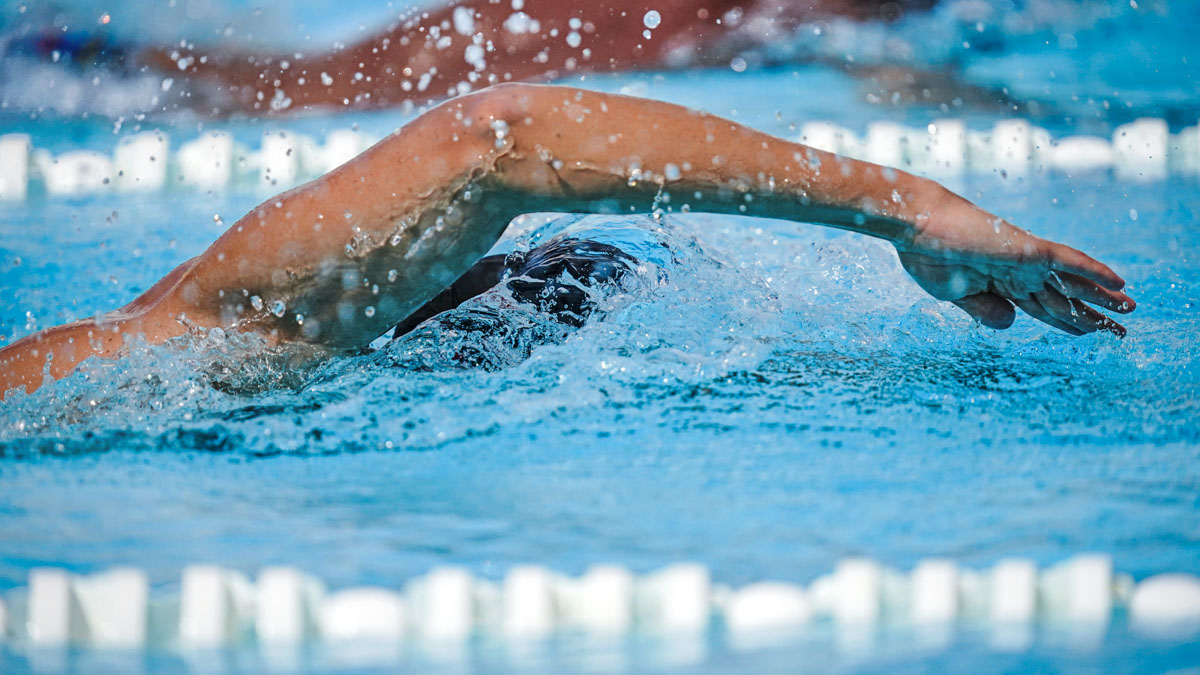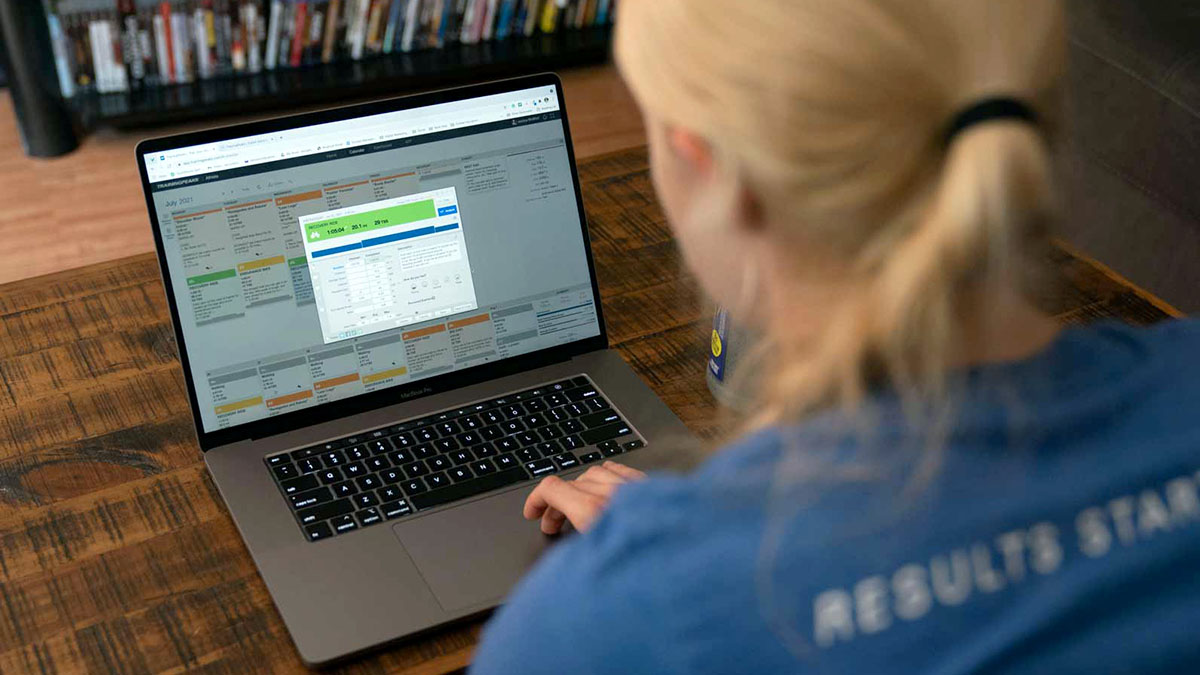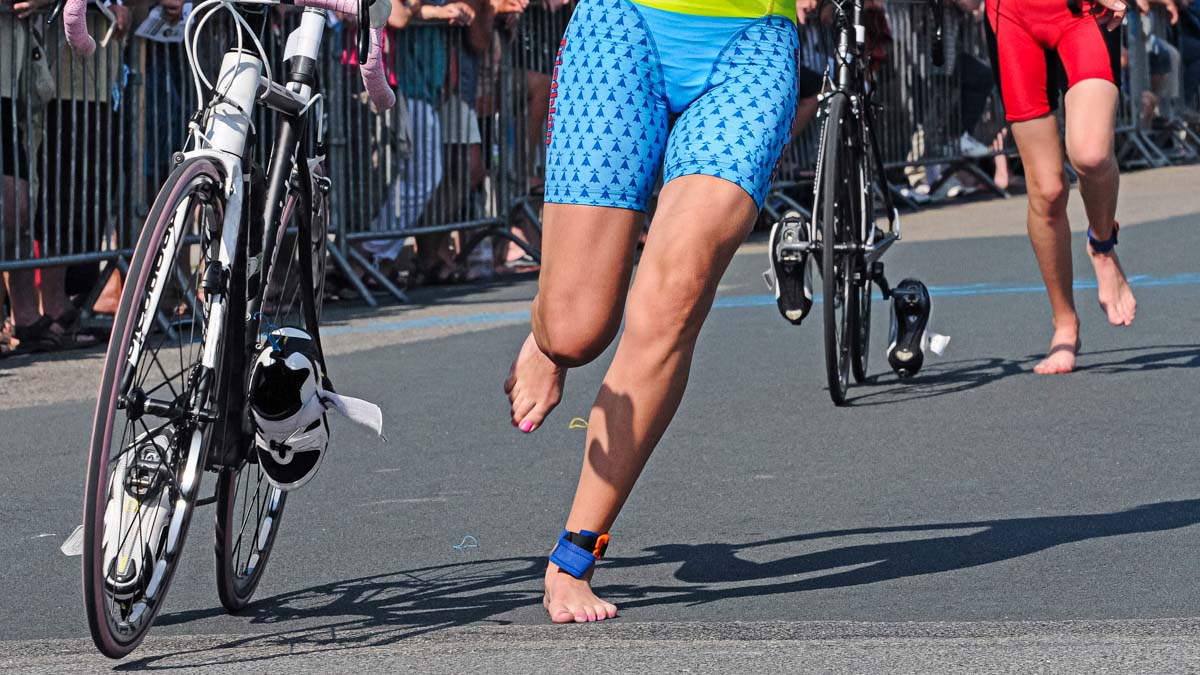It’s the discipline triathletes love to hate.
Often a scourge for athletes who prefer running and cycling, swim training commonly falls by the wayside in the off-season. With no upcoming need to execute long open water swims as part of races, many triathletes neglect swim training for months. For most, this approach is a mistake. Swim performance benefits tremendously from a focused block of training. The off-season presents a great opportunity to increase swim load, resulting in gains that carry over into the next season and beyond.
Especially for athletes who are relatively weak swimmers (such as those who learned how to swim as adults and who lack refined technique and advanced fitness), an off-season swim block can be just what an athlete needs to break his/her plateau or gain a newfound appreciation and love for the sport.
To best guide athletes through an off-season swim block, coaches should keep the following five steps in mind.
Set expectations and establish a feasible frequency
The swim is a deceptively time-intensive discipline, mostly due to travel and prep. The time spent gathering gear, driving to the pool, changing, and showering can really add up. For these reasons, it’s important for athletes to buy into the value of a swim-focused block and establish a reasonable swim frequency.
As a general rule, I find the sweet spot for most age-group triathletes is around three or four sessions per week during the season, but when athletes are looking to do a swim-focused block, they should aim to increase frequency beyond this level. It’s not unreasonable to increase typical swim volume by 50 to 100-plus percent over a swim block. Still, it’s important to monitor athletes closely to ensure they build at an appropriate rate to avoid shoulder or elbow injuries.
It’s important to remember that the swim, like all technique-focused disciplines, benefits from frequency and consistent engagement. Coaches should teach athletes not to scoff at the idea of short sessions. Five 30-minute sessions are better than two 90-minute sessions. Once the ideal frequency is established, a coach can determine the ideal mix of workout types within a week and structure the plan to accommodate these sessions relative to the other disciplines. The swim-run brick, for example, is an extremely efficient brick workout that allows an athlete to maintain frequency across disciplines with less of a time investment.
Focus on improving swim technique
As one of the most technique-driven sports, swimming well requires relentless attention to form. The first few weeks of a swim block are the ideal time to hone technique and develop good habits. At the beginning of the block, coaches should film athletes in the water and identify obvious form flaws. Athletes are often not aware that they have hitches in their strokes and can’t feel what they are doing incorrectly. Through video analysis, however, inefficiencies become evident. Coaches should point out areas to improve upon, such as poor rotation, crossover, a weak pull, poor alignment, sinking legs, etc., and prescribe relevant drills that athletes should execute in order to improve.
Each drill should have a purpose, and a coach should explain to athletes the “how” and “why” behind each. Mindless drilling is pointless if athletes can’t transfer potential benefits to their stroke, so all drilling should be combined with actual swimming. For example, an athlete who rotates her head too much to breathe could do a side-kicking drill (i.e., putting on fins and kicking on her side with a lead arm stretched in front and one goggle in the water at all times). In order to better translate the sensation of keeping her head low in the water when actually swimming, she can alternate one lap of side kicking and one lap of swimming to directly enhance her swim form.
In addition to directly improving form, emphasizing technique at the beginning of a swim block instills in athletes the habit of constantly assessing their form. The mission of improving technique is an endless endeavor and should not simply be relegated to drilling or occasional form-focused sessions—it should be a perpetual focus. By emphasizing technique up front, athletes learn to be “thinkers” in the water and establish deeper engagement with their strokes, both of which will prove particularly valuable during tough sets or races later on.
There are many ways to structure a technique-focused swim workout. It could include 50% swimming and 50% focused drilling or a more standard, interval-based workout wherein an athlete focuses predominantly on one important facet of the swim stroke for each interval (an effective catch, the finish, entering in line with the shoulder, etc.). No matter the structure, it’s important to explain to athletes that they need to be focused, feeling the water and aiming to win the imaginary “perfect form” award.
Measure progress with field tests
At the beginning and throughout the off-season swim block, coaches should have athletes complete field tests to confirm current fitness and track progress. One of the more common tests entails swimming 3X300 with 30 seconds of rest at the best possible average pace. The average pace per 100 is an athlete’s threshold, or T-pace (Zone 4). Apart from providing a measurable benchmark, knowing an athlete’s T-pace enables a coach to prescribe precise interval paces for various workouts to ensure that athletes achieve the desired stimulus from their sessions— whether they be speed-, threshold-, or endurance-focused.
Emphasize quality, high-density swimming sessions
Most triathletes don’t swim enough to realize the benefits of a traditionally-structured, high-volume swim plan. Pure swimmers put in massive volume, often well over 30,000 meters per week, with much of this distance at fairly low intensities. For these athletes, the warm-up may be as long as a typical triathlete’s entire workout. For triathletes only swimming 8,000 to 12,000 meters each week, it’s important to make each stroke count and “recovery swims” are not the best use of time. However, it’s very possible to achieve great fitness gains on three to five 2,000- to 3,000-meter sessions, so long as each set is efficient and purposeful.
The specific mix of workout types that an athlete should incorporate each week depends on the number of sessions an athlete can incorporate each week. If an athlete can only do three sessions per week, focusing on a threshold workout (e.g., 100- to 200-meter repeats at T-pace on short rest), endurance workout (e.g., 300- to 800-meter repeats on short rest), and a technique/intensity hybrid workout is logical, though certain athletes (such as those who lack basic endurance or who have truly poor form) may benefit from a different mix. If an athlete is striving to swim six or seven workouts per week, however, making one or two of them truly low-load (well below Zone 4) or technique-focused is important.
Encourage swimming in a masters group and/or compete in swim meets
If an athlete mostly swims on his/her own, it may benefit him/her to mix it up and swim with a masters group or swim club. By swimming with others and under the watchful eye of a coach, athletes are often motivated to swim harder and with superior form. A coach on deck giving encouragement and critiquing techniques can be great motivation.
As an additional incentive to train hard, athletes can sign up for a swim meet or two through their local swim club. Having a carrot out front in the form of a race gives a purpose to training and can encourage athletes to maintain consistency—both of which are desirable outcomes for triathletes who weren’t necessarily “born” to swim.
Conclusion
There is no better time of the year to become a great swimmer than in the off-season. With focus and a methodical approach, athletes can take advantage of the break from triathlon racing to become great swimmers. A proper swim block can be just what athletes need to stop floundering in the water so that their next triathlon season isn’t another game of catch-up on the bike and run.









